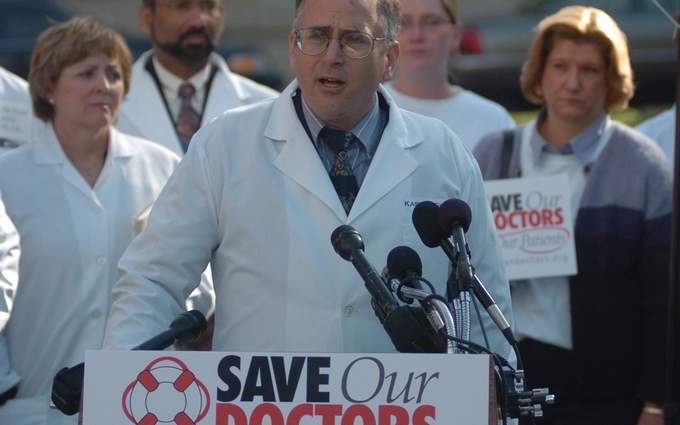 In the spring of 1975, physicians in the Bay Area walked off the job. The strike, triggered by a fourfold increase in malpractice insurance premiums, soon spread across the state.
In the spring of 1975, physicians in the Bay Area walked off the job. The strike, triggered by a fourfold increase in malpractice insurance premiums, soon spread across the state.
Doctors, hospitals and patients were shaken.
With two major insurers threatening to cancel negligence policies in the state, the Legislature met in special session and enacted a law limiting the size of malpractice judgments to $250,000 for non-economic damages.
The Medical Injury Compensation Reform Act, better known by the acronym MICRA, ended the crisis.
It also perpetuated a political war between two of the biggest spending interest groups in the state — physicians and plaintiffs’ lawyers. And, over time, it made it increasingly difficult for people of ordinary means to pursue medical malpractice claims.
The next MICRA battle is looming — a potential 2014 ballot initiative to repeal the law.
That campaign would be the political equivalent of a nuclear war and, like a conflict between the superpowers, it should be stopped before it starts.
Thirty-second ads and sloganeering are no way to address a complex issue or to scrutinize a law that, though it serves a valuable purpose, may be due for some adjustments. However, if there are any changes, they should be made with a scalpel, not a meat ax.
In that spirit, Senate President Darrell Steinberg wants doctors and lawyers to come to the bargaining table before heading to the polls.
“The best way that can actually get done is with real conversation, real negotiations between the affected stakeholders,” the Sacramento Democrat told reporters last week.
Physicians defend the law for the same reason lawyers oppose it: economics. Insurance premiums have risen more slowly and malpractice claims have fallen faster than the national average since MICRA was adopted.
Neither of those results is bad. However, the cap on non-economic damages, primarily for pain and suffering, unchanged for nearly 40 years, has made it extraordinarily difficult, perhaps too difficult, for people who can’t afford to pay a lawyer in advance to pursue legitimate malpractice claims.
In contingency cases, the lawyer gets a percentage of the judgment. And adjusted for inflation, the $250,000 cap of 1975 is worth less than $60,000 today.
Barry Keene, a former Sonoma County legislator who sponsored MICRA, described his own law as “oppressive” in a recent interview with the Los Angeles Times.
When the bill was being debated, Keene suggested indexing the cap to inflation, which would have increased it to about $1.1 million today, comparable to the caps in several other states with similar laws. That idea was rejected by the trial lawyers, who assumed the law would be overturned in court. They were wrong, and injured parties have suffered.
MICRA includes other protections for physicians, such as a short statute of limitations, that should stand. However, the $250,000 cap deserves another look. An increase to $1.1 million in one step is probably too much, but the doors to the courthouse shouldn’t be closed only because an injured party can’t afford a lawyer.









